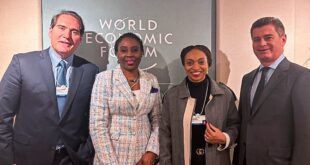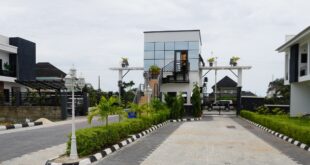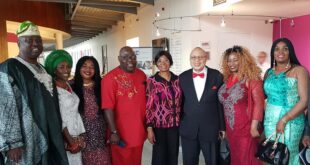In 2010, almost 600 million Africans or 57 per cent of the population had no access to any form of electricity. Africa is experiencing rapid economic growth, with estimates showing growth figures for the continent rising from 4.7 per cent in 2013 to 5.2 per cent in 2014. However, if this growth is to be sustained, renewable energy must have revitalised investment and be at the forefront of a stable African economy, writes Finbarr Toesland*
There has been a considerable number of initiatives established in recent years that have sought to address the continent’s energy requirements, while providing the poorest Africans with energy that has been obtained in an environmentally responsible way. The African Renewable Energy Fund is one such venture that has raised US$100 million to increase the number of grid-connected renewable energy projects in sub-Saharan Africa.
Africa is a broad and diverse continent, with every country facing its own unique energy challenges, but there are a number of key reasons for the expected growth spurt in Africa’s renewable energy industry as a whole. The main reason investors have pinpointed Africa as a prime region of interest has been the efforts made to enable higher levels of private investment in the energy sector. Nigeria privatised its state-owned energy distribution companies in 2013 with great success, and many other African countries experienced boosted foreign investment, while government funding has remained at similar levels to previous years.
It may have taken severe power shortages for countries to warm to private investment, such as the disastrous energy shortfall in South Africa in 2008, but it seems that finally barriers to investment have been removed. Major clean energy companies such as Enel Green Power believe that Africa is “the next big place” for renewable energy, with the company spending almost three quarters of its growth fund in emerging markets, such as Africa.
It is expected that “African countries will need to spend at least 6 per cent of their GDP on energy over the next ten years to keep up with their economic growth. It is therefore clear that a number of technologies (both traditional and new) will need to be applied,” said Dana Rysankova, a World Bank senior energy specialist for Africa. African governments may be reluctant to spend such a high percentage of GDP on energy projects; however, as the price of power from diesel generators rises the economic case for switching to renewable energy sources gains support.
Projects such as the Great Rift Valley in Kenya highlight the potential that renewable energy has to transform Africa. This 6,000-kilometre stretch of terrain represents a major mass of untouched geothermal energy and, once fully developed, it will become the largest single geothermal energy source. The 280 MW Olkaria geothermal power plant, the world’s largest, began commercial operation in February 2015. The plant will provide almost 20 per cent of the nation’s total power capacity
The biggest wind farm in Africa is also being built at Lake Turkana in the Rift Valley.
If Sub-Saharan Africa is to achieve universal access to energy by 2030 then its
generating capacity must increase three and a half times, from 132TWh in 2014 to 462TWh, in 2030. This lofty goal will only be achieved through the innovative combination of off-grid and mini-grid technologies because the central grid is heavily congested and inaccessible to many Africans. In Kenya alone the growth in off-grid solar power has given 2.5 million households access to energy, which shows the success of decentralised energy production.
African governments will play a central role in creating and maintaining a reliable energy infrastructure, at both local and national level. Dr Alastair Buckley at the Department of Physics and Astronomy, University of Sheffield, agrees that “solar lanterns and mobile phone chargers have great uses in Africa” but concedes that “they will not catalyse economic growth. Herein lies the tension between a developed world pushing Africa to adopt renewable energy and the reality that Africa needs productive power that may or may not come from renewable sources. “Of course it would be unfeasible for Africa to switch entirely to renewable energy overnight, but the larger role these sources play will increase the overall energy resilience and diversity in Africa.”
Africa is responding to the urgent need for new renewable energy; the continent added more renewables in 2014 alone than in the past 14 years. This unprecedented growth is in part due to the fast falling cost of renewable energy, coupled with the fact that Africa has some of the most effective locations for hydropower, wind and solar energy production.
The production of renewable energy on the continent cannot only restrict dependence on foreign fossil fuels, which in turn will limit the exposure to variations and volatility in the price and supply of imported energy, but can also decentralise the power supply and provide energy directly to the end-users. With the average price of solar photovoltaic modules falling by more than 60 per cent in the past two years to below $1 per watt, there has never been a better time for Africa to refocus its efforts on increasing the proliferation of renewable energy.
South Africa has emerged as one of the most appealing solar energy generators globally, with solar power generation forecast to total 1,050MW by 2015, up from a mere 25MW in 2012. Laura Cozzi, head of the energy modelling unit of the IEA Global Energy Economics Directorate, also has high hopes for South Africa’s renewables programme, calling it “a world-class example for renewables deployment, solar in particular, at very competitive prices”.
The relatively high upfront costs of renewable energy sources have been prohibitive to many, but this barrier is being broken by pay-as-you-go choices that providers such as Indigo solar offer by utilising mobile payments to activate solar energy access. While it may be difficult to raise finance for many renewable energy projects, Cozzi argues that “increased power sector investment is key to achieve Africa’s development potential. In our latest World Energy Outlook we estimate that each dollar invested in the power sector in the continent can leverage $15 of economic growth.”
Africa lacks the same high-level expertise in renewable technologies that other more developed countries have; most experts come from overseas to assist with African projects. That said, the number of Africans trained in renewable technologies is expected to rise, owing to agreements such as those signed by Chinese Science Minister Xu Guanhua and his African counterparts, which commit to training 10,000 Africans in solar power technologies.
It is clear that the potential for renewable energy in Africa is unrivalled by any other energy source and, if economic growth is to be maintained, then public-private partnerships must be created throughout Africa to promote investment. On a smaller household scale, the effect of further adoption of renewable energy is a major advantage, with households saving more than 12 per cent of their income by switching to solar lights from kerosene lamps.
*Finbarr Toesland is a London-based business journalist
 THE AFRICAN COURIER. Reporting Africa and its Diaspora! The African Courier is an international magazine published in Germany to report on Africa and the Diaspora African experience. The first issue of the bimonthly magazine appeared on the newsstands on 15 February 1998. The African Courier is a communication forum for European-African political, economic and cultural exchanges, and a voice for Africa in Europe.
THE AFRICAN COURIER. Reporting Africa and its Diaspora! The African Courier is an international magazine published in Germany to report on Africa and the Diaspora African experience. The first issue of the bimonthly magazine appeared on the newsstands on 15 February 1998. The African Courier is a communication forum for European-African political, economic and cultural exchanges, and a voice for Africa in Europe.


























